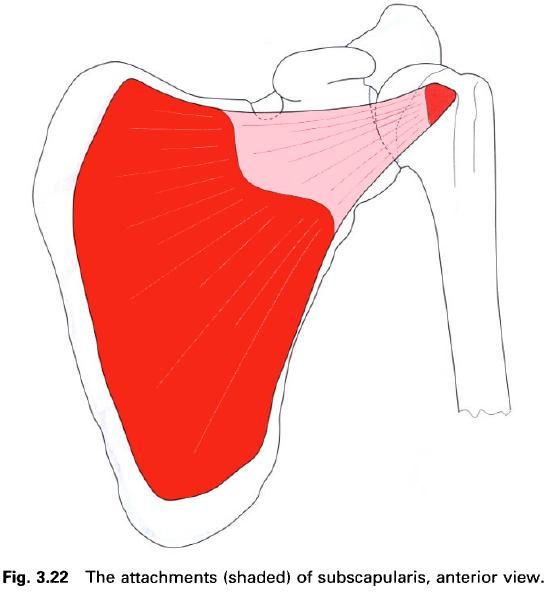Subscapularis
Subscapularis
Subscapularis forms the greater part of the
posterior wall of the axilla and as such lies in close proximity to teres major and latissimus dorsi. The anterior surface of the muscle lies on serratus anterior. When seen from the
front it forms the upper boundary of the upper triangular and quadrilateral
spaces.
Subscapularis is a multipennate muscle which
arises from the medial two-thirds of
the subscapular fossa and from
tendinous septa, which reinforce the
muscle, attached to bony ridges in the fossa. There is also an attachment to
the fascia covering the muscle. The muscle fibres narrow and form a broad,
thick tendon which attaches to the lesser
tubercle of the humerus, the
capsule of the shoulder joint and the front of the humerus below the tuberosity. A bursa, which communicates directly
with the shoulder joint, separates the tendon from the neck of the scapula.
Nerve
supply
Subscapularis is supplied by the upper and lower subscapular nerves, root
value C5, 6 and 7, from the posterior cord of the brachial plexus.
Action
Subscapularis is a strong medial rotator of the
arm at the shoulder joint; it may also assist in adduction of the arm.
Functional
activity
As part of the “rotator cuff”, subscapularis
plays an important role in maintaining the integrity of the shoulder joint
during movement, by keeping the head of the humerus
within the glenoid fossa. It also resists upward displacement of the humeral
head when deltoid, biceps and the
long head of triceps are active.
Palpation
The muscle belly cannot be palpated as it lies
deep to the scapula. However, careful
deep palpation may allow the tendon to be felt just before its insertion onto
the lesser tuberosity.










0 коментара:
Постави коментар